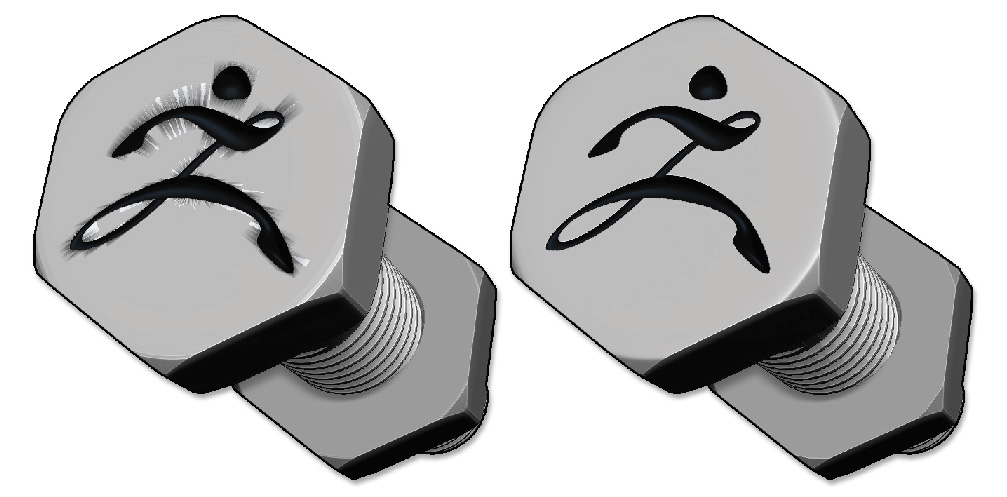Data Support and Preservation
The Boolean operation can preserve some of the data included in the original SubTools and will propagate that to the resulting SubTool(s). Some data types are not supported and it is important to keep them in mind. Please check the list below.
Supported data:
- PolyMesh 3D and associated topologies: subdivision surfaces, ZModeler, DynaMesh, etc.
- ZSphere models: only if they are in Preview mode, by pressing the Tool >> Adaptive Skin >> Preview button (A hotkey). The Adaptive skin can be in Subdivision mode or DynaMesh mode.
- ZSketch models: like ZSpheres, are only supported if they are in Preview mode.
- ArrayMesh, NanoMesh and other instance tools. ZBrush will convert them to a mesh during the Boolean process.
- FiberMesh: Even if the FiberMesh in Preview mode it is not supported, it is strongly advised to converted fibers to geometry and only use 3+ sided fibers. Using 1 or 2 sided fibers will produce unexpected results.
Unsupported data:
- HD Geometry: This type of data is not supported and won’t be taken into consideration by the Boolean process.
- 3D Primitive (parametric) models: All the 3D primitives found in the Tool >> Tool Selector cannot be processed. You must convert them to a PolyMesh 3D before being able to use them with Boolean operations.
- Render time objects: Any topology which is only generated during a BPR render, like MicroMesh and surface noise cannot be processed. All these processes need to be converted to real geometry first.
- Partially visible meshes: during the process, all openings created by the hidden polygons will be considered as holes and will be removed using the Tool >> Geometry >> Modify Topology >> Close Hole function. It is strongly advised to make your polygons visible before using the Boolean operations.
Propagated datas:
- Original topology: Only the parts which are affected by the Boolean operation will be triangulated. All the other areas will keep their original topology. Of course, subdivision levels will be collapsed to the current level and Dynamic Subdivisions will be applied only if the Boolean DSubdiv mode is enabled.
- PolyGroups: Each PolyGroup in the original SubTools will be preserved in the resulting SubTool(s), including at the areas where the Boolean operations took place.
- PolyPainting: The PolyPaint from each original SubTool will be preserved in the resulting SubTool(s), however, some loss of quality may be visible in the area where the Boolean operation connection took place. If a PolyPainted model with a high density of polygons is connected to a low-resolution model, the difference in resolution will produce a connected area which will lack enough resolution to preserve the original PolyPaint quality. Subdividing the low-resolution models before performing the Boolean operation will help prevent this.

The PolyPaint has been preserved on the left, but the difference in density didn’t produce a clean result. On the right, the top part has been subdivided prior to the Boolean operation, producing a better PolyPaint result
Removed datas:
- UV’s: UV’s from each SubTool are completely removed by the Boolean operation process. Even SubTools without major modifications will have their UV’s removed. This is because UV mapping depends on the model’s point list and any Boolean operation automatically changes the number of points.
- Textures: Because UV’s are not propagated, texture will be removed.
- Subdivision levels: Because the Boolean operation only operates on the resulting SubTool geometry, the current subdivision level will be used for the process and all other levels discarded.
- Creased edges: The creasing is removed during the Boolean operation.
- 3D Layers: Only the current topology of the model is processed by the Boolean operation and so all other layers of the model will be removed.
- Masks: They have no effect on the Boolean operation process and are removed after processing.
- Surface Noise preview: Because it is only a rendering effect, Surface Noise won’t be taken into consideration by the Boolean operation. You must first apply the Surface Noise if you want to keep it.